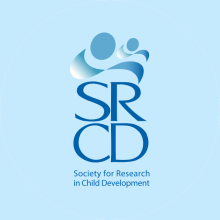September 2008 Spotlight on the SRCD Policy Fellow: Ann Marie White, Ed.D.
2007-2008 Federal Congressional and Executive Branch Policy Fellow
Windowless offices, asbestos rehabilitation, piles of binders waiting alongside an empty Rolodex, and a desk assignment next to an infamous "anthraxed" mail cubby. I knew that research was not glamorous, yet I quickly learned that the federal workplace likely was going to be very similar. But little of this mattered to me. I had observed that many senior scientists I respected shared this as a common early career experience. I also felt that this track was indeed special. And, as my dissertation emerged from a three-year primary, longitudinal data collection study - I was ready to bypass the "traditional" post-doc route to instead extend my training on the frontier of science and policy. By the fall of 2004, I had completed two consecutive fellowships. The first was in U.S. Congress, working for the Senate Subcommittee on Children and Families of the HELP Committee. The second year I served as the first SRCD fellow for the Office of Behavioral and Social Sciences Research within NIH's Office of the Director. The Rolodex was now full, and my comprehension of the federal science and policy landscape on scientific issues of importance to me - early education, child care, and the relationships of education and health - was solid. In fact, these 20,000 foot-view experiences would serve me well were I to stay at the NIH after the fellowship, and as was my intention. There was indeed a new 1.0 fte waiting for me to accept. I saw myself remaining in this role of "general contractor," drawing on funding and leadership resources to create scientific worksites where individual researchers could lay the bricks that would form the walls of cumulative knowledge needed to address health phenomena perhaps best understood via transdisciplinary approaches to science. But a nagging thought dampened this seemingly effortless launch. I had learned during the fellowships that success at the nexus of science and policy required leadership and partnership at both federal and local levels. In other words, whatever I chose to do, I would only ever be a component of a complex systems endeavor, and I hadn't yet gained adequate experience in a central element of it. So, I started from square one. Once again facing a desk with an empty Rolodex, I launched an academic career as a junior faculty member to focus on blending research interests with neighboring community interests and expertise. I began by building local relationships to understand and help meet the needs of both science and policy interests within academic medical center walls and also beyond, in local communities. I was also funded to change our psychiatry department's climate to support the integration of community as equitable partners into our traditional academic missions of research, clinical service and education. The local- national synergy remains ever present in this work. For instance, these experiences led to a project developing national training institutes in communitybased participatory research for the fields of suicide prevention and mental health promotion. After four years of program implementation, I have been able to institutionalize many of these efforts. So, together with local professional and community networks, I am now able to be a lead academic partner in the development of several community-based participatory research grants of importance to members of my community, designed to produce tangible scientific, public policy, and health outcomes. I am optimistic that over time, we will develop local community-led approaches to address significant scientific questions that will aid in how policies and programs, designed to address the health and development of traditionally marginalized youth in our society, are implemented and disseminated. I do this work with conviction. A conviction I feel stems directly from the learning I had during those two years as a fellow of SRCD.
